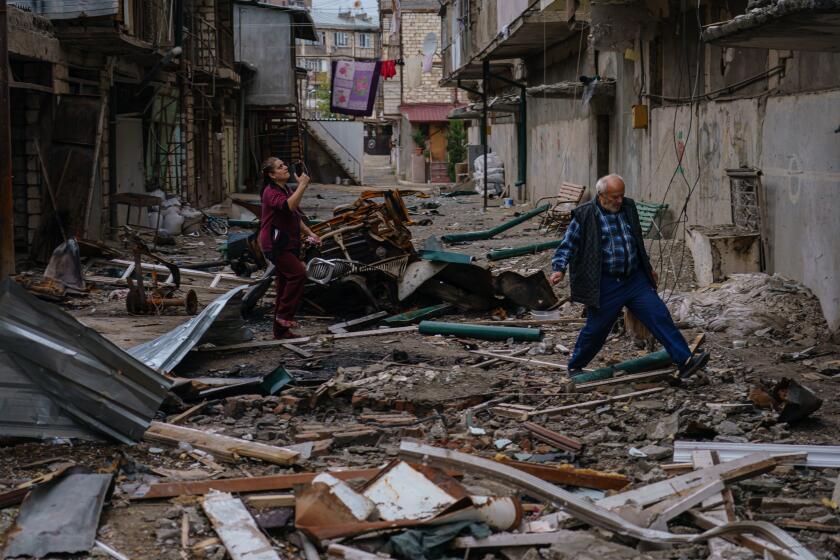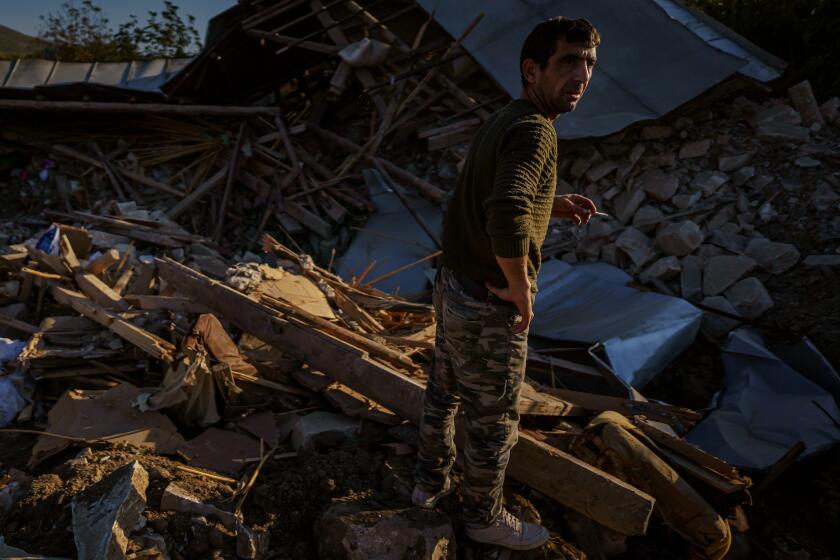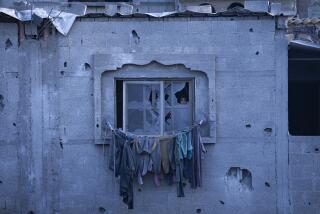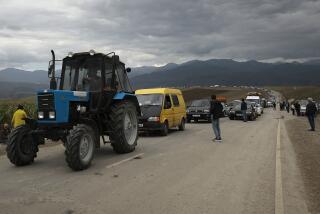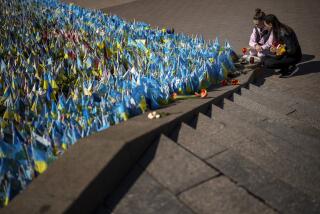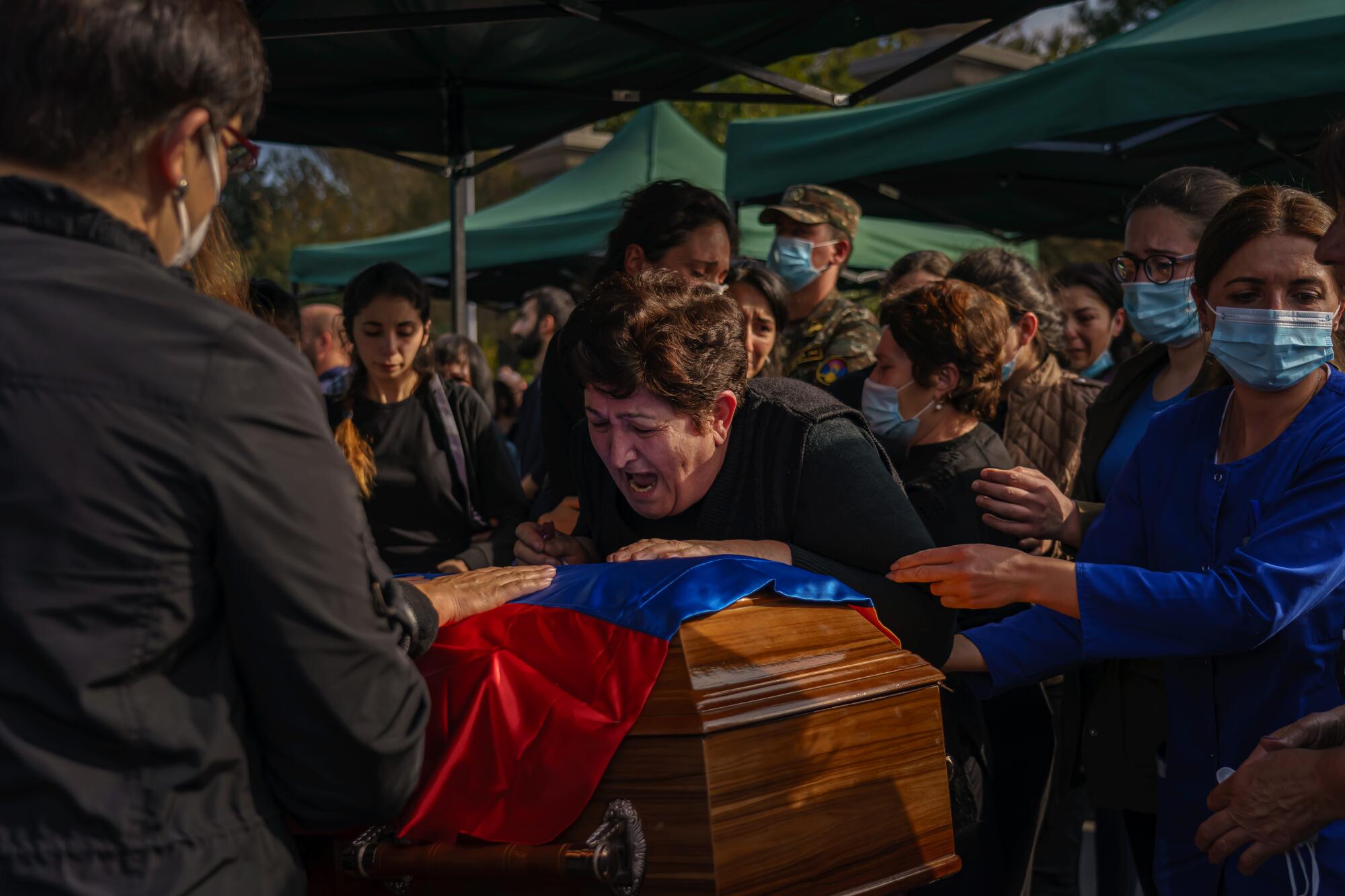
- Share via
NEAR MARTAKERT, Azerbaijan — The “line of contact” separating Armenian and Azerbaijani soldiers threads a meandering 120-mile-long path between the military trenches scarring the plains of Nagorno-Karabakh.
The boundary marks the two sides of a war that has solidified grievances as uncompromising and storied as the trenches themselves, whose gun emplacements, mines and rust-crusted barbed wire make up one of the world’s most militarized zones.
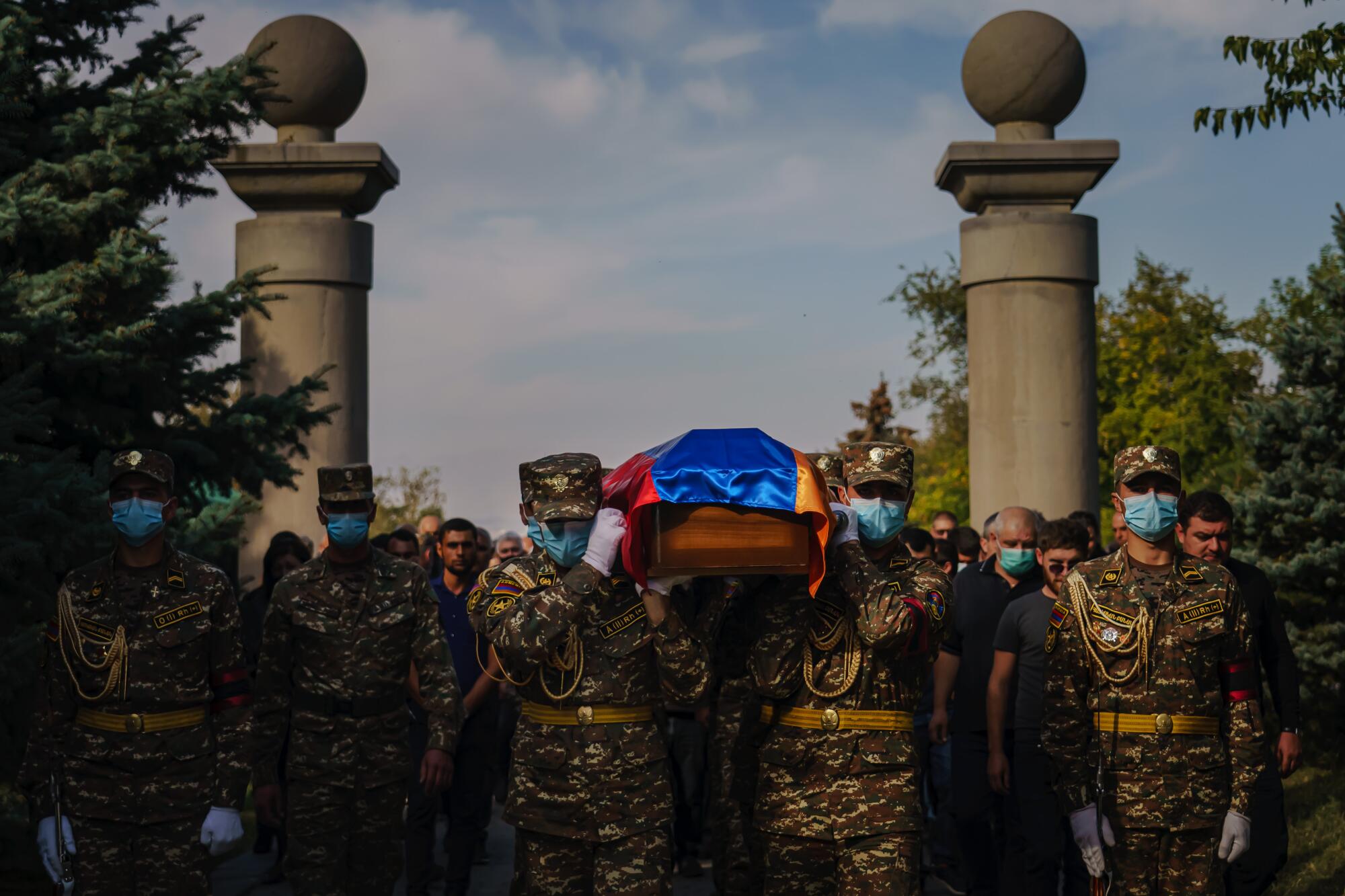
That zone has been drenched with yet another vicious bout of bloodletting between Armenia and Azerbaijan, the most violent since the conflict over this disputed mountainous territory — which is ruled by ethnic Armenians but considered part of Azerbaijan under international law — faltered into an uneasy cease-fire in 1994.
In the last three weeks, despite repeated Russian-brokered attempts to stop the violence, dozens of civilians and hundreds of soldiers have been added to the growing roster of the dead in a clash whose tragedies suffuse daily life.
“It’s become a total war in a way that it wasn’t before,” said Thomas de Waal, an expert on Nagorno-Karabakh who has written a book on the conflict.
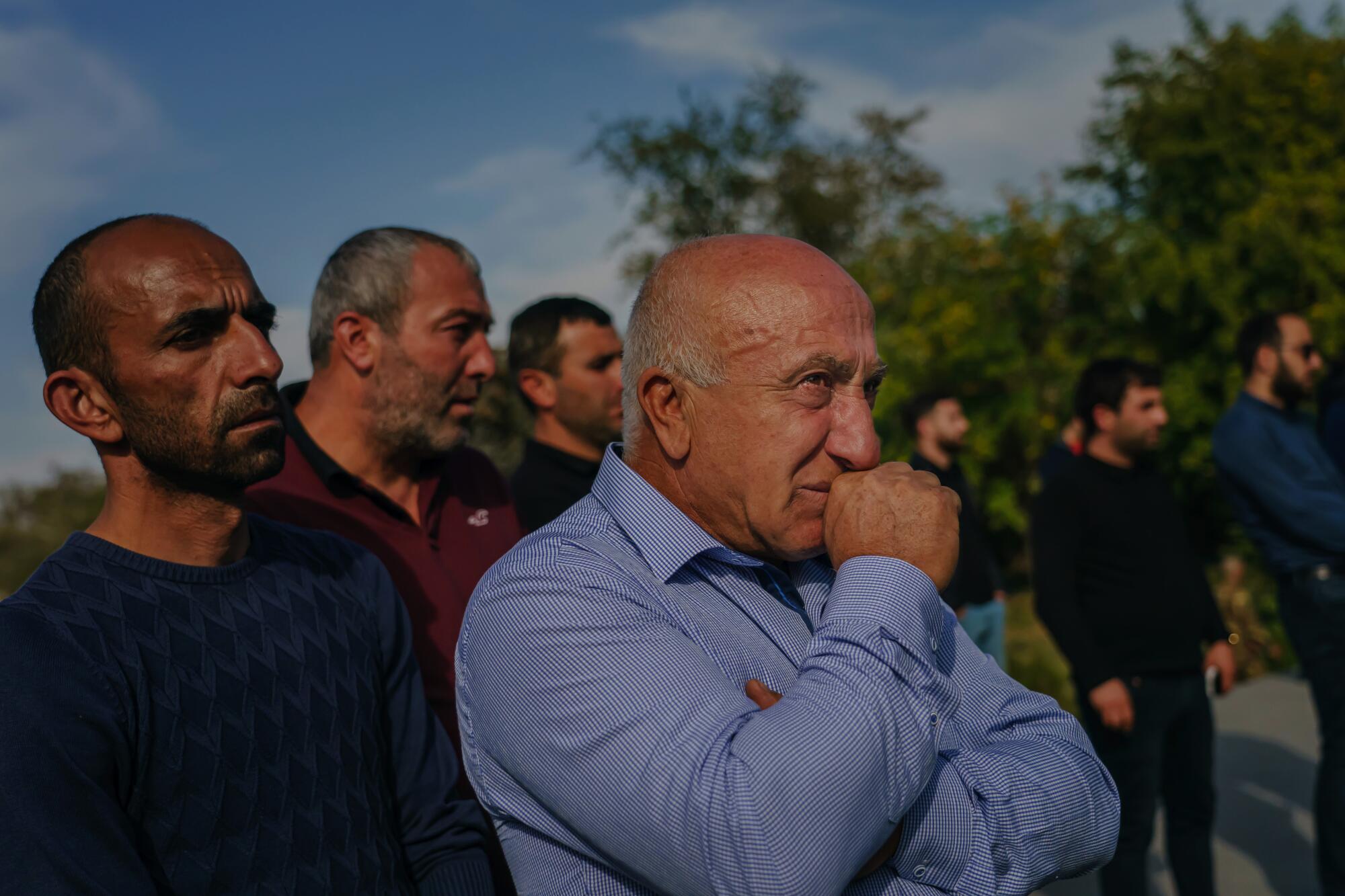
“Both sides have been locked in this impossible struggle where Karabakh is essential to the nation-building project of both countries, so neither side can afford to lose it.”
Whether here on the front line, in the towns and villages of Nagorno-Karabakh or in Armenia and Azerbaijan, the on-off war is an inescapable reality, spurring a community-wide mobilization that defines both nations.
For Azerbaijanis, said Javid Aga, an expatriate writer based in Turkey, the war has become “an endpoint of the formation of the Azerbaijani identity” — a way to erase the enduring shame of the country’s loss of control of Nagorno-Karabakh.
“To this day they thought their pride was stolen,” Aga said, “and now, by regaining those territories, they feel they will get it back and shake this image of themselves as a losing nation.”
Armenians view the conflict as an existential one, about their survival as a people, not just as a nation-state, after generations of persecution and pogroms. The feeling ripples out far beyond Armenia’s borders, inspiring members of the diaspora, from Los Angeles to Beirut, to join the war effort here.
That can have grievous results, which came sharply into focus one unseasonably warm afternoon this month when a crowd of about 1,000 people massed in somber, sweaty discomfort in the Yerablur military memorial cemetery. It lies on a hilltop on the outskirts of the Armenian capital, Yerevan, more than 130 miles away from the front lines — a picturesque burial ground for soldiers killed in the war for Nagorno-Karabakh, which Armenians call Artsakh.
In its central courtyard, a military guard in full regalia stood at attention before a 20-member military brass band. They were there for the funeral of Kristapor Artin, a 48-year-old business owner and chinchilla breeder who had moved from Toronto to Armenia in 2011. He had joined a regiment of volunteers organized by the Armenian Revolutionary Federation, a nationalist party that has brought far-flung members of the Armenian diaspora to Nagorno-Karabakh to fight.
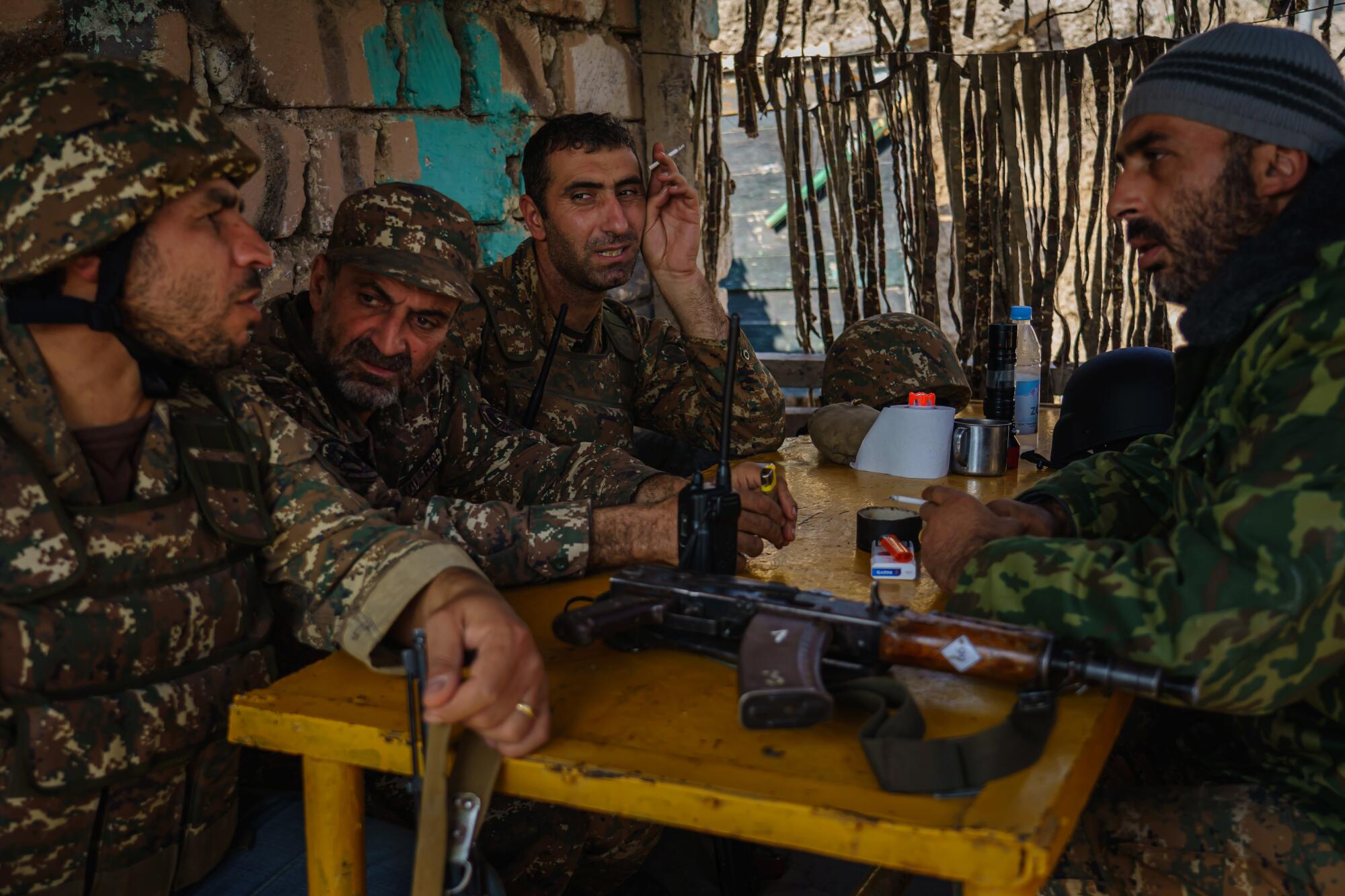
Artin was killed in early October on the northern section of the line of contact.
“He was one of the first people to teach me about Artsakh and the ongoing struggle for Armenian rights,” said Rupen Janbazian, a Toronto-based editor at h-pem, an online Armenian platform, who met Artin in Toronto and plans to move to Armenia with his partner later this year.
Janbazian has lost two friends in the recent violence, including Artin.
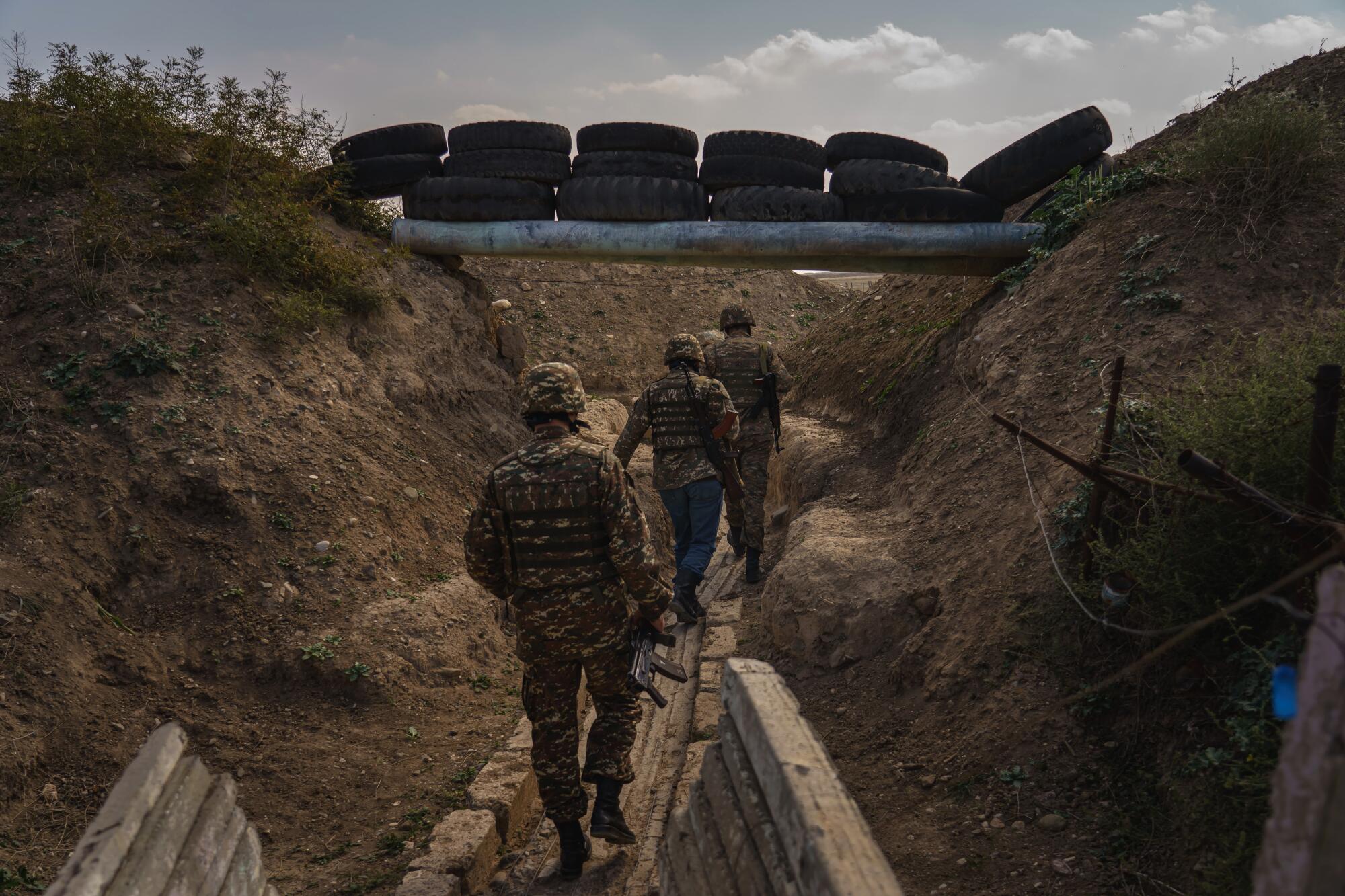
“They weren’t full-time soldiers — this wasn’t their jobs. They volunteered because they felt their compatriots were facing an existential threat,” Janbazian said.
Near Artin’s grave, another group gathered to bury Suren Vanyan, who had also recently been killed on the front line.
“Suro, why did you leave us so soon? Why was this your fate?” cried his mother, wailing his nickname over and over.
When the band began to play a funeral dirge, her voice crescendoed to a fever pitch with the swelling of the music as white-gloved soldiers picked up her son’s coffin. It was the cue for most of the men to filter away to the burial area, leaving behind a clutch of women to comfort Vanyan’s mother.
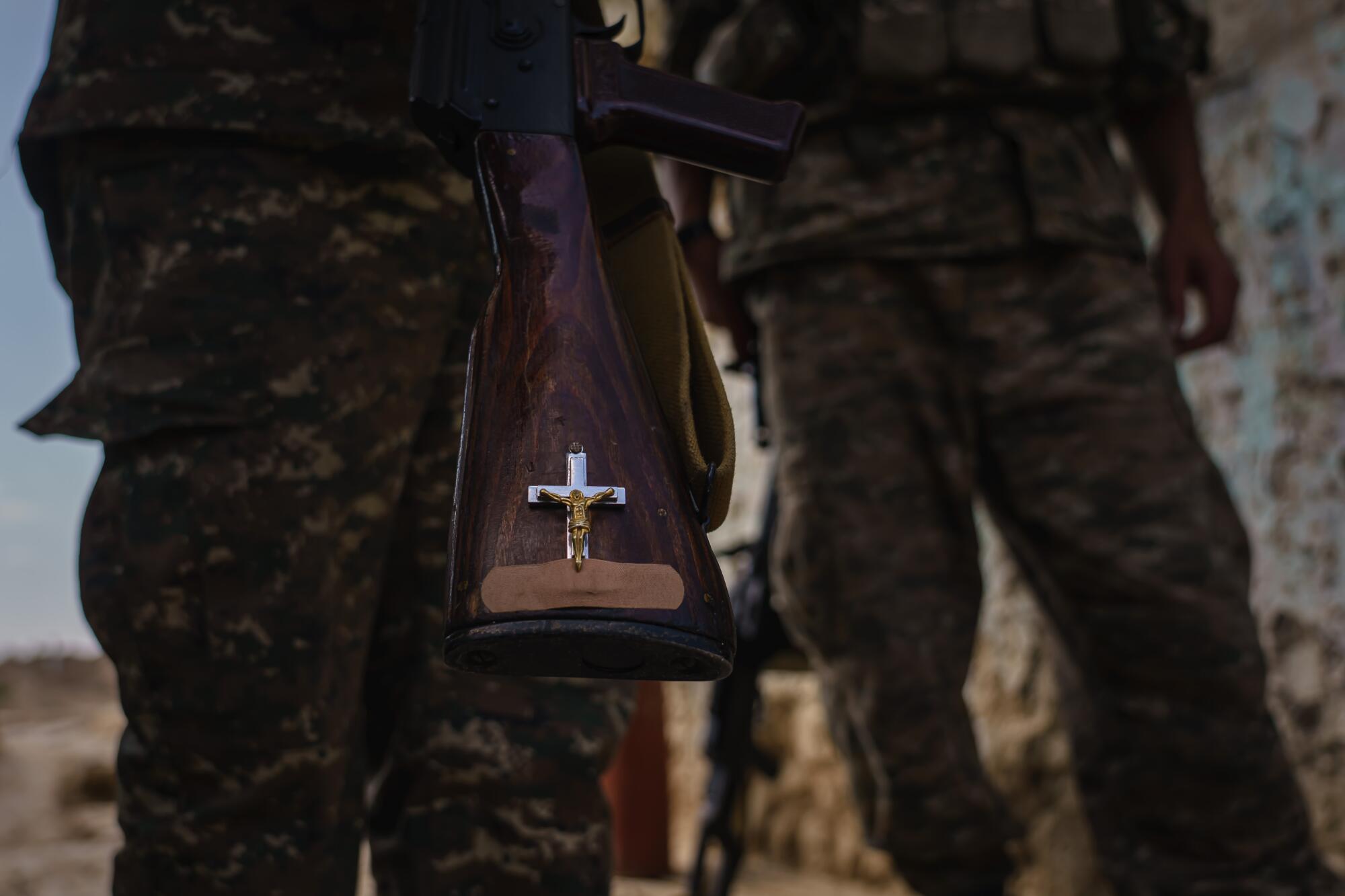
As the coffin was lowered into a gash of freshly dug earth, the crowd began to sing an all-too-common anthem here:
“Tell my beloved I do not sleep peacefully in the fight.… Let the blood I lost become an example for the Armenian soldier.”
Armenians root their claim to Nagorno-Karabakh in demographics, saying they’ve constituted a majority in the area for centuries. Although ethnic Armenians once lived peacefully with their Azeri neighbors during the Soviet era, a move by those living in the territory toward independence and unification with Armenia in 1988 erupted into all-out war.
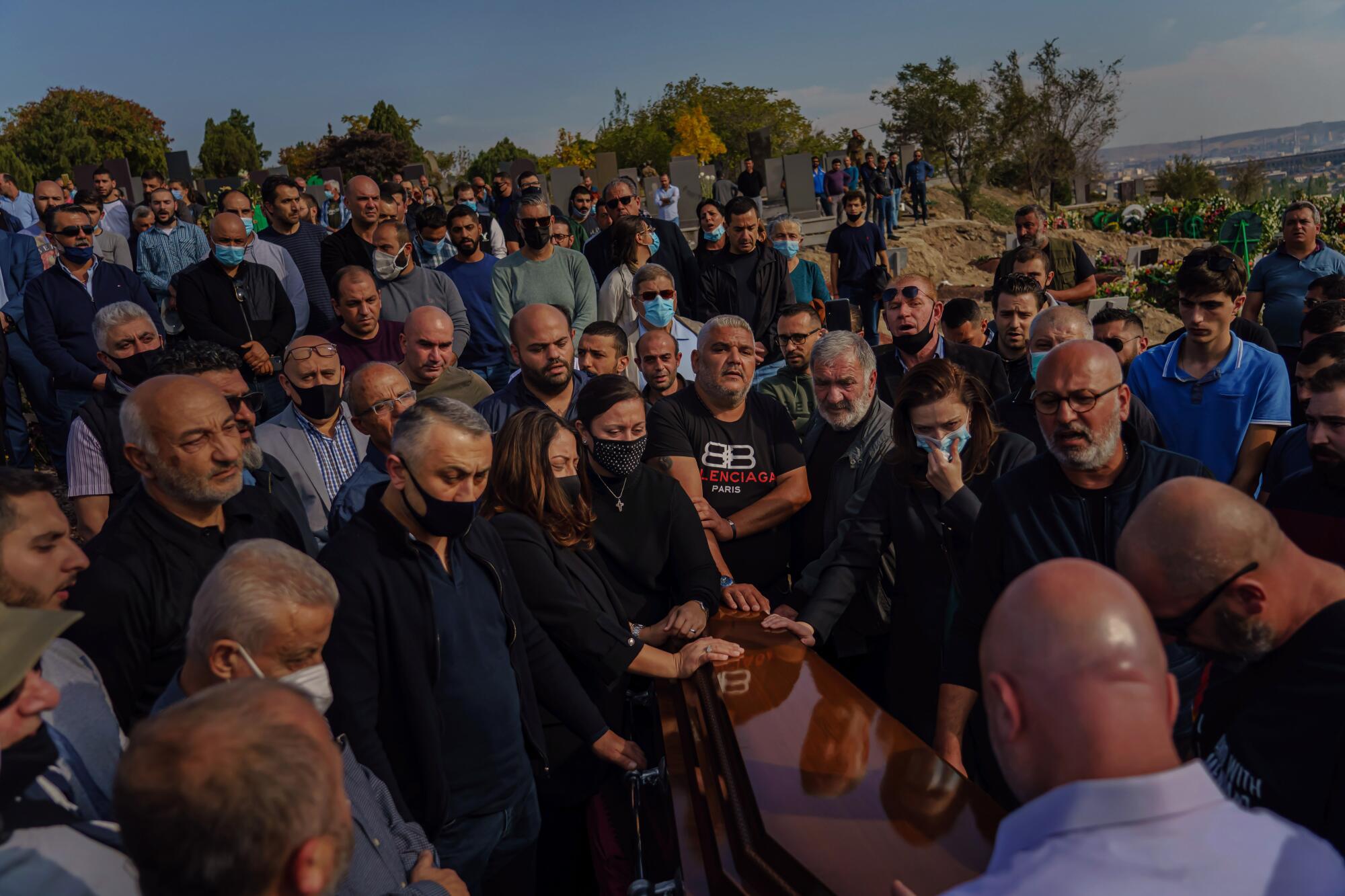
Six years later, after expulsions and massacres committed on both sides, Nagorno-Karabakh, as well as the mostly Azeri-populated provinces surrounding it, became Armenian-controlled territory, and the line of contact, establishing a supposedly neutral zone, was drawn. The conflict gave rise to more than a million refugees, most of them Azeris, while rendering the area a yin-and-yang of enclaves and exclaves that have locked the two peoples in an unwanted embrace since the Soviet Union’s collapse.
Suleyman Hajizade’s family was forced to abandon its home in the town of Shusha (Armenians call it Shushi) during the war in the ‘90s and settled in the Azerbaijani capital, Baku. He and his family are part of the roughly 10% of Azerbaijan’s population displaced from what is now Armenian-controlled territory.
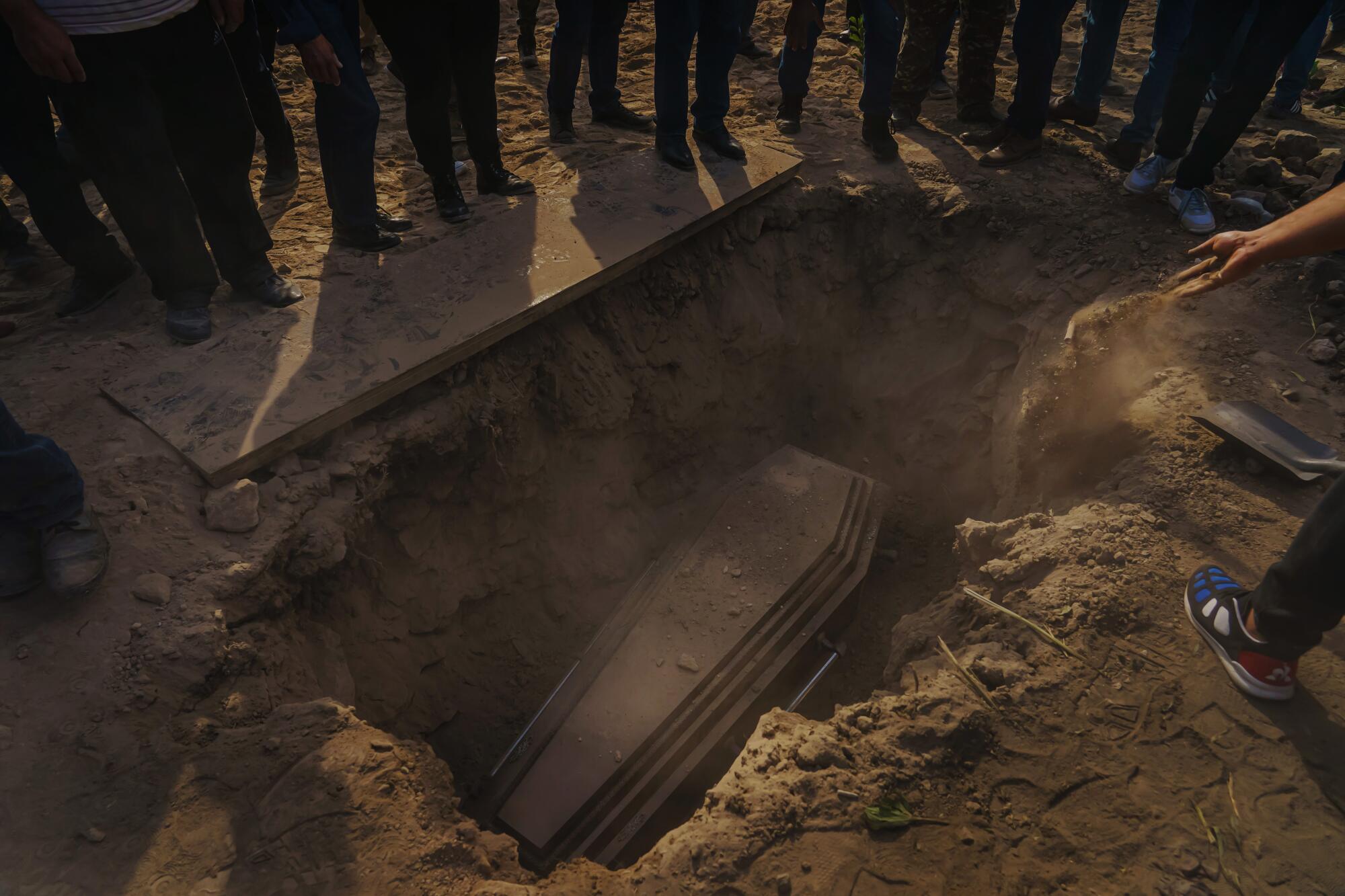
“The loss of Shusha and Nagorno-Karabakh … every day we feel it — in our every conversation, in every family gathering,” said Hajizade, 25. “We suffered from that loss for many years, and many of our relatives, including my father and grandfather, died with the dream of returning in their hearts.”
Hajizade and his family staunchly support the current military campaign.
“Until these days, my family thought they would never be able to return home, see the lands where they grew up. But now we observe the liberation of some occupied territories and it gives us hope,” he said.
“War is not a good thing, but we saw in 28 years that peace can’t be reached, and our violated rights and hopes and dreams will only be restored or achieved in this way.”
The same land exerts an equally talismanic hold on Tom Sarkisian, an 18-year-old Armenian on the front line who, like Hajizade, was not even born when the 1994 truce was called. Sarkisian is a few months into his two years of mandatory military service.
“It’s hard to be here. But these are our brothers, and this is our soil,” he said.
Keeping hold of it has come at a grim cost. Armenian officials on Tuesday put the death toll at 773 servicemen and 30 civilians.
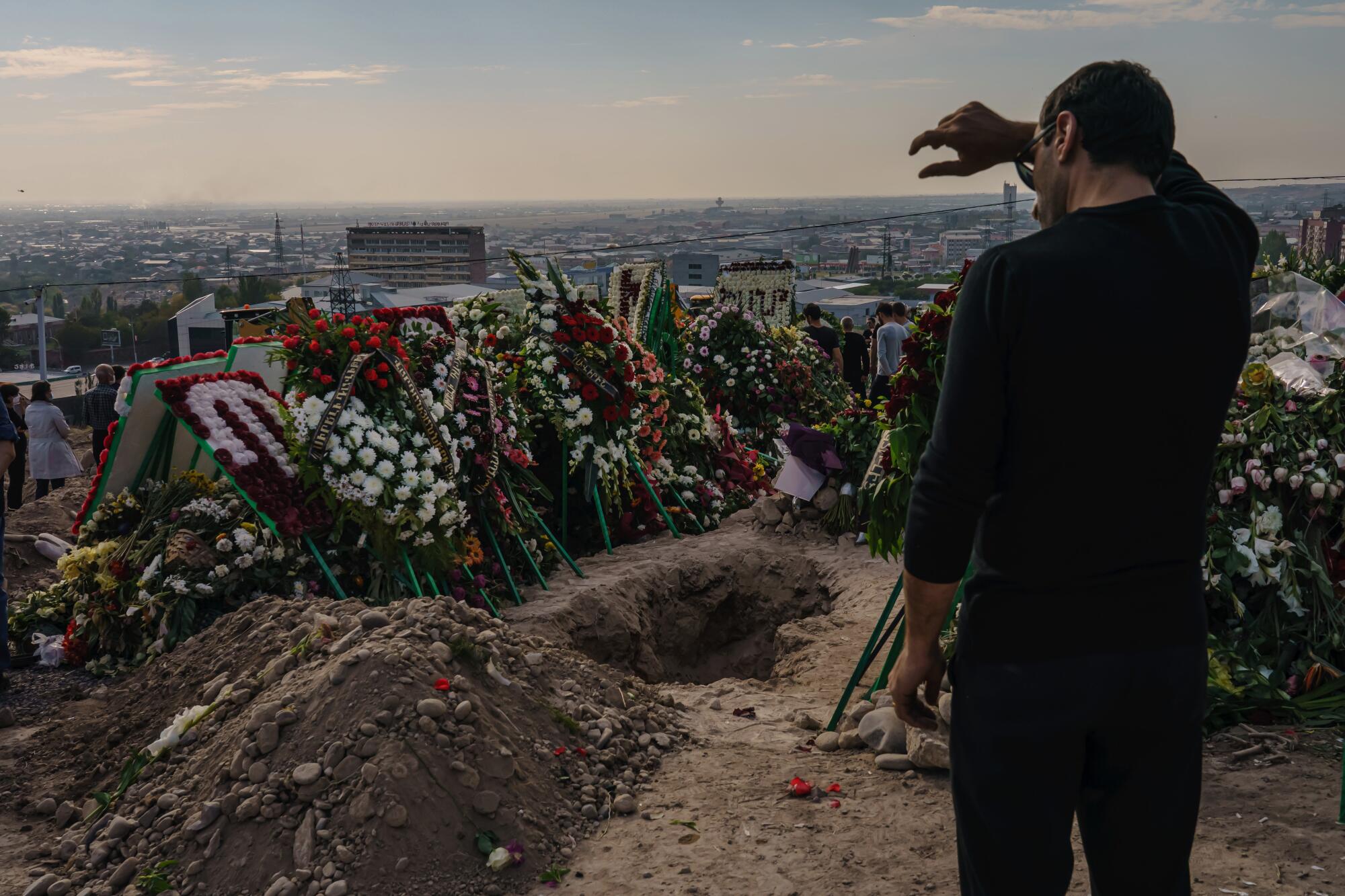
Azerbaijan does not disclose military losses, but officials there said Wednesday that 63 civilians had been killed since hostilities began in September, with a further 292 wounded. Armenian artillery has targeted major Azerbaijani population centers, including Ganja, Azerbaijan’s second-largest city.
Despite those losses, Azerbaijani President Ilham Aliyev said in a televised address to the country Tuesday that he had no intention of stopping the hostilities.
“The victorious Azerbaijani army is gaining new victories on the battlefield,” he said. “We are fighting on our own land, defending our own land, and we will continue to drive the invaders out of our lands.”
Azerbaijan’s fleet of high-tech drones — it has spent billions on arms from Israel and Turkey — have made quick work of Armenia’s Soviet-era defense systems, even as Armenia has dispatched soldiers, reservists and volunteers to hold the line.
One such reservist was Arman Gevorkyan, 41, from the lakeside town of Sevan in Armenia, who had been stationed at the Mataghis front line but was now at a base in the town of Martakert. It had been 20 years since Gevorkyan last held a Kalashnikov, but he spoke with the earnestness of the priest he was and the rhetoric befitting the fighter he hoped to be.
“I have the Bible in one hand and the gun in the other,” he said, adding that his position near the front line had been subjected to a merciless barrage of shells.
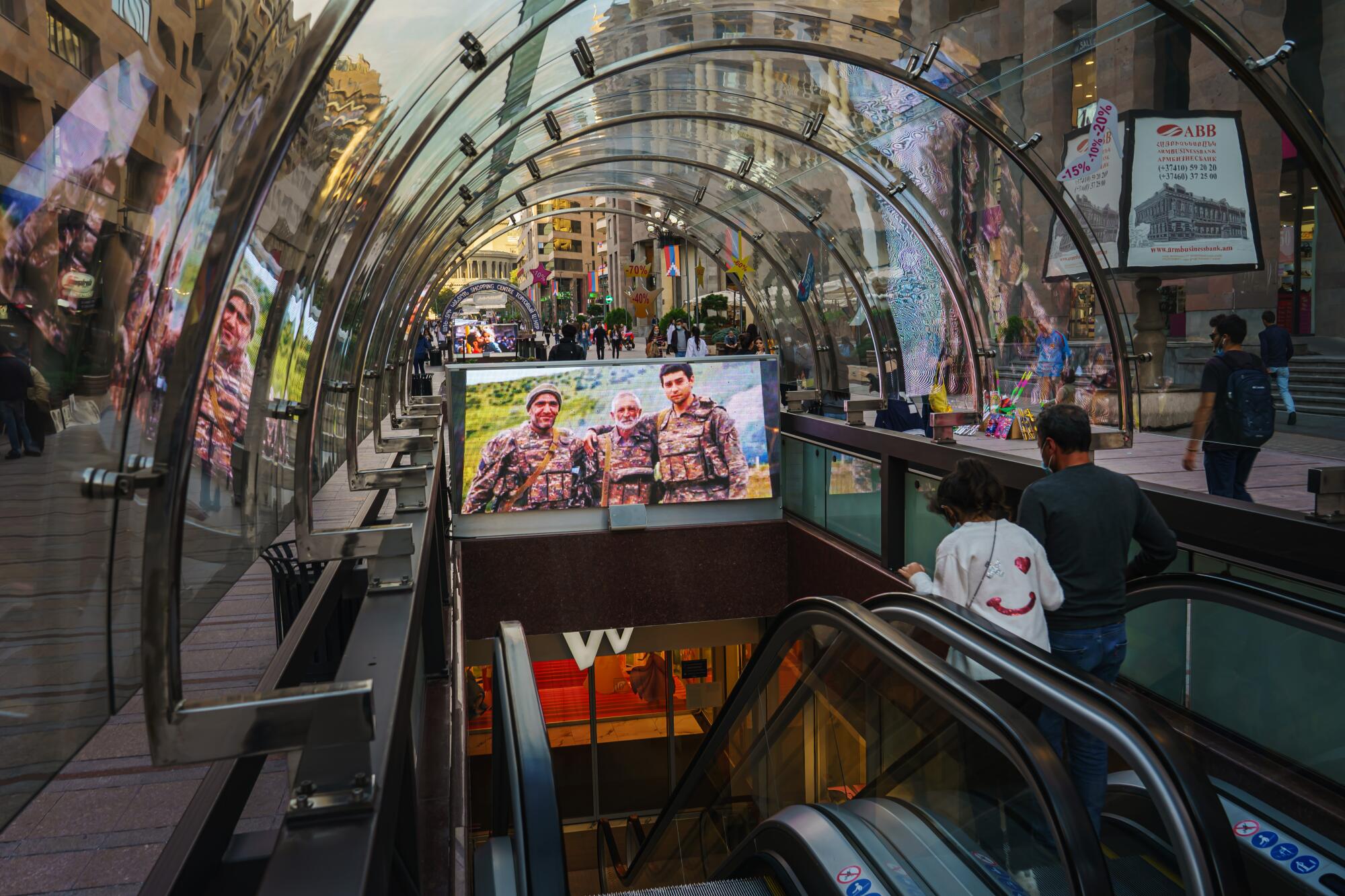
“But all of us were safe, and the people in my position said it was because of me,” he said, “because there was a servant of God there.”
Near him, young conscripts kept an eye on the sky for drones as they lounged around a sign informing them that, just like bullets, smoking kills. Almost all smoked.
“We’re waiting. We don’t know why,” said Arsen Mosherghyan, a pasty-faced 18-year-old recruit. It was his first time in Nagorno-Karabakh, he said.
“It’s boring. But not when the shells are falling.”
There was little of that ennui in Rafael Vermichian, a 61-year-old volunteer sitting in the World War I-like confines of a trench on the line of contact.
“I’ll stay here as long as the war continues,” he said, adding that he had three grandchildren waiting for him in Yerevan, where he worked as a van driver.
“The only goal for us all is victory, so our children won’t have to come here and continue this war again.”
More to Read
Sign up for Essential California
The most important California stories and recommendations in your inbox every morning.
You may occasionally receive promotional content from the Los Angeles Times.
